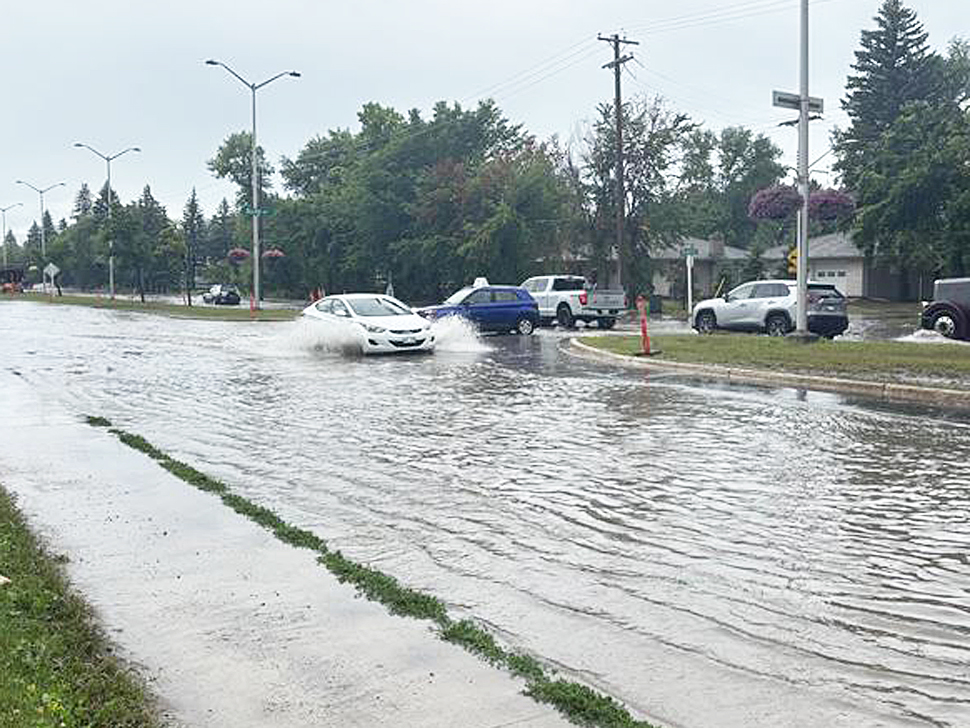The Head Engineer for Steinbach says the city's drainage system worked as it should in Tuesday's rainstorm.
The city received about 43 millimetres of rain that day, which is about 1.7 inches. At times, the rainfall was hard enough that streets began to flood.
Aaron Rach says this is to be expected. According to Rach, municipalities design their drainage systems to accommodate historic rainfall events. For example, new developments in Steinbach restrict and retain runoff to handle a 1-in-25-year rain event. However, Rach says some older areas of the city were developed before modern storm water management policies were adopted or were common practice.
"Those areas might not meet today's standards," he says.
In order to understand the system, Rach says you should think of Steinbach as a giant bathtub. During a big rain event, the water will fill up and then slowly drain out. During heavier rains, Rach says the water will temporarily pool on streets and in ditches. He explains that the system is designed in such a way that water is stored on the surface when the pipes are full, and then gradually drains.
"Designing a system for no water accumulation at all would require significantly larger infrastructure, which is costly, disruptive, and unnecessary for typical rainfall events," he says.
Rach notes Steinbach's drainage network includes catch basins, pipes, ditches, and retention ponds. He says all of these work together to collect, flow, and safely release the storm water. Rach says it is normal for the water to temporarily back up during peak rain events, especially in low points or in older neighbourhoods.
"This restriction is necessary to help manage that runoff safely so that it doesn't overwhelm downstream areas," he emphasizes.
Rach adds that as the city upgrades its infrastructure and redevelops areas, it applies current design standards to improve capacity and resiliency. He says they also monitor rainfall trends and are mindful of the impacts of the changing weather patterns.
According to Rach, Tuesday's storm was somewhere between a one-in-10 and one-in-15-year rain event. That takes into consideration the total rainfall amount and the time in which it occurred. With that in mind, Rach says the city's drainage system performed as expected on Tuesday, even though some streets had more pooling than others.
"I'm not aware of any property damage due to overland flooding," he says. "And during these storm events, the city monitors key locations and inspects the system regularly to make sure everything is functioning."
Meanwhile, Rach says in future rain events, residents of Steinbach should continue to expect to see the type of pooling that happened Tuesday. However, they can be rest assured that the drainage system is not broken.
"We understand it can be concerning to see pooling in the street," he says. "But in many cases, that means the system is working as it should, managing storm water safely and gradually."
Rach says the city is always working to improve and maintain infrastructure to serve the community better.
